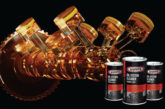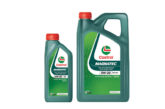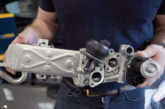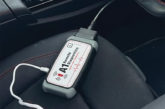Neil Pattemore explains why independent garages need to understand and embrace pass-through technology if they want to keep their customers out of the clutches of the main dealer.
The European Commission in Brussels may have a reputation in the UK media as being bureaucratic and only existing to make your life harder (and more expensive), but independent workshops should be very grateful that the Commission supports the IAM by creating the legislation that protects your rights to access in-vehicle data.

With this comes the obligation for VMs to provide a standardised ‘pass-through’ method to enable replacement electronic parts and components to be re-programmed or recoded, thereby avoiding the need to return a vehicle to the main dealer to allow the repair to be completed.
Various UK industry associations such as the Garage Equipment Association and the IAAF, together with their colleagues in the European Aftermarket associations and the European Commission staff in Brussels, all worked very hard to ensure that you’re able to access the repair and maintenance information that you critically need to conduct your day-to-day business. The fundamental basis of fair competition and consumer choice is enshrined in this ‘Euro 5’ European legislation.
How did it happen?
So where does this benevolent position come from? It all started with the Commission Regulation 1475/95 on the application of art.85(3) of the EC Treaty that applies to certain categories of motor vehicle distribution and servicing agreements, which has evolved to become the legislation we know today – ((EC) No. 1400/2002) – more commonly known as ‘Block Exemption Regulations’ (BER).
This not only considered the ‘vertical agreements’ that exist between the VMs and their franchised networks, but importantly recognised the need for independent operators to have access to the same diagnostic tools, repair and maintenance information and technical training as the VM’s main dealers.
It has to be said that, on paper, this BER looked great, but it didn’t work nearly as well in practice as originally planned. There are a variety of reasons that contributed to this, not least the fact that some VMs clearly did not fully ‘play by the rules’. This was reported back to the European Commission by various national trade associations and was challenged in the European courts, resulting in hefty fines for some VMs.
Before BER ended, however, the European Commission had already recognised that several critical points required revised and improved regulations. It therefore took the opportunity to use the Euro 5 emission legislation (EC No. 715/2007) to include more clearly defined obligations that requires VMs to provide ‘bumper to bumper’ repair and maintenance information, spare parts information, technical information and access to the diagnostic software information needed by diagnostic tool manufacturers to create multi-brand tools.
Neil Pattemore has worked for over 40 years in the automotive aftermarket, with a CV that includes job roles for parts distributors and manufacturers as well as vehicle test equipment manufacturers at a senior level, both in the UK and internationally. Neil now works mainly in Brussels with the European institutions to defend the rights of independent repairers throughout Europe to access vehicle repair and maintenance information.
In addition it created a standardised access to VM’s websites for not only vehicle specific data, but also to be able to connect a vehicle through a standardised vehicle communication interface and re-program or re-code electronic components – allowing independent garages to complete repair jobs without having to take the vehicle to a main dealer.
Although the original BER was modified on 31st May 2010, the rights of independent operators to access technical information still remain for these older vehicles not covered under Euro 5.
What does Euro 5 provide?
This Euro 5 legislation applies to any new vehicle which has been Type Approved from 01st September 2009 and to all new vehicles from 01st January 2011 (irrespective of when they were first Type Approved). So, as Euro 5 compliant vehicles are now at least five years old, you need to consider the following points before you can benefit from the Euro 5 legislation:
■ Recognise that you can now target newer vehicles, so think about contacting local small fleets, as well as including this message in your advertising.
■ Ensure that you have a ‘Euro 5 compatible’ diagnostic tool and the corresponding vehicle communication interface (known as an ISO 22900 or J2534 VCI).
■ Understand that during your ‘day to day’ business, you will still be able to provide normal servicing and maintenance work, but with the advantage of being able to additionally access detailed information if needed, together with the ability to recode, re-configure and even re-program the component/ECU to complete the job.
What do I need to buy?
When working on Euro 5 Type Approved vehicles, many of the service and maintenance requirements are no different to previous vehicles and it is not necessary to access information from the VM (with the associated cost). The previous process of diagnosing or repairing a vehicle remains the same, so existing multi-brand diagnostic tools are still an important part of workshop equipment, but with the knowledge that if greater technical information is needed, you need to access this from the VM’s website.
However, most critically, it is now possible to connect the VM’s website to the vehicle in the workshop to re-code, reconfigure or re-program a vehicle component, using a ‘Euro 5 compatible’ standardised vehicle communication interface (VCI), plus a reliable, high speed internet connection.
The connection through the standardised VCI allows ‘pass-through’ communication where the appropriate data is transferred directly from the VM’s website to the vehicle system or component, avoiding the need to invest in dedicated VM diagnostic tools or to visit the main dealer.
The European Commission have done their work and provided the platform for you. It’s now up to you to make sure that you use it effectively so that pass-through doesn’t end up passing you by!
EURO 5 – WHAT’S IN IT FOR INDEPENDENT OPERATORS?
The VM’s obligations are defined as:
“Manufacturers shall provide unrestricted and standardised access to vehicle repair and maintenance information to independent operators through websites using a standardised format in a readily accessible and prompt manner, and in a manner which is non-discriminatory compared to the provision given or access granted to authorised dealers and repairers. Manufacturers shall also make training material available to independent operators and authorised dealers and repairers”.
*The information must be available on the VM’s website within six months of the date of Type Approval.
HOW DO I ACCESS THE INFORMATION I NEED?
To access the VM’s website, it is possible to search for the correct URL by using a proprietary search engine (e.g. Google), or by contacting the VM‘s national sales office. You then go to the appropriate website and register your business and (typically) credit card details, followed by the selection of the vehicle model and information you need using the VIN or product features. Normally, this access and information is charged for on a time-related basis (hourly, daily, monthly, or as an annual contract).
For security (anti-theft) related information, this too will be available under Euro 5 Regulations, but although the scheme to provide this is coming soon, it is not yet in place.










